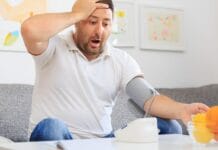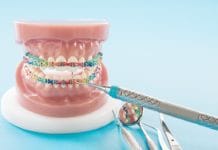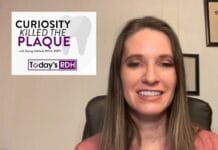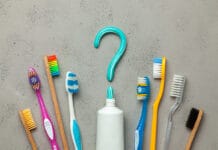How up-to-date are you with best practices for infection control during the COVID-19 pandemic? Test your knowledge below!
Which of the following PPE is recommended for use during the pandemic?
In addition to respirators/masks and gloves, the use of visors or protective goggles, full coverage disposable gowns, and headgear caps are recommended for use during the pandemic. This is due to the transmission routes that include direct and indirect contact with body fluids via ocular, oral, and nasal mucous membranes.
Amato, A., Caggiano, M., Amato, M., Moccia, G., Capunzo, M., De Caro, F. Infection Control in Dental Practice During the COVID-19 Pandemic. Int J Environ Res Public Health. 2020; 17(13): 4769. Published 2020 Jul 2. doi:10.3390/ijerph17134769. Retrieved from https://www.ncbi.nlm.nih.gov/pmc/articles/PMC7369766/
During the pandemic, if possible, do not use ultrasonic scalers.
Studies have shown aerosols can remain suspended in the air for 30 minutes after ultrasonic scaling has ceased. Due to this, it is recommended to reduce aerosol-generating procedures as much as possible.
Patel, M. Infection control in dentistry during COVID - 19 pandemic: what has changed? Heliyon. 2020 Oct 30; 6(10): e05402. doi: 10.1016/j.heliyon.2020.e05402. PMID: 33163669; PMCID: PMC7640357. Retrieved from https://www.sciencedirect.com/science/article/pii/S2405844020322453
If a family member or spouse living in the same dwelling tests positive for COVID-19, you should quarantine 14 days after your last contact with the individual. Exceptions made by your local public health department may allow you to stop quarantine after day ten without testing or after day seven after receiving a negative test result.
According to CDC guidance, quarantine begins after your last contact with an individual that is positive for COVID-19. Quarantine should generally be 14 days. Depending on local conditions regarding the spread of COVID, your local public health department may vary and include options such as ending quarantine after ten days or ending quarantine after seven days with a negative test result that was administered on day five or later.
Centers for Disease Control and Prevention. COVID-19. When to Quarantine. Retrieved from https://www.cdc.gov/coronavirus/2019-ncov/if-you-are-sick/quarantine.html
The use of an HVE can reduce aerosols by more than 90%; to be classified as an HVE, the suction must have a large opening (bore size) of 8 millimeters or greater.
Though there are any evacuation devices to choose from, unless it has the ability to remove a large volume of air, up to 100 cubic feet of air per minute, the device is not considered an HVE. In order to remove that volume of air, an 8-millimeter or larger bore hole is required. Devices that have multiple smaller holes are not as effective, nor are they considered an HVE.
Harrel, S.K., Molinari, J. Aerosols and splatter in dentistry: a brief review of the literature and infection control implications. J Am Dent Assoc. 2004; 135(4): 429-437. doi:10.14219/jada.archive.2004.0207. Retrieved from https://www.ncbi.nlm.nih.gov/pmc/articles/PMC7093851/
The CDC recommends the use of an N95 respirator when conducting aerosol-generating procedures. This requires a fit test; which of the following are OSHA-accepted qualitative fit test methods?
In addition to the above-mentioned tests, irritant smoke, which causes coughing, is also an OSHA accepted qualitative fit test method.
The Occupational Safety and Health Administration (OSHA) states, “Workers within 3 feet of a patient or equipment during an aerosol-generating procedure must wear a fit-tested N95 filtering facepiece respirator or more protective respirator. (Particulate filters with any N, R, or P and 95, 99, or 100 rating are protective against the COVID-19 virus.). If you have not been fit tested for an N95 mask, you may not be getting the proper level of protection, which increases your risk of contracting COVID-19. Please be conscious of this and insist on a fit test for N95 respirators for aerosol-generating procedures.
Further, OSHA regulations are mandates, meaning they must be followed, or the employer risks penalties. The penalty depends on the type of OSHA violation. Penalty examples are:
- Serious violation (other than posting violations): $13,653 per violation (maximum amount)
- Failure to abate violation: $13,653 per day beyond abatement date (maximum amount)
- Willful or repeated violation: $136,532 per violation (maximum amount)
American Dental Association. Conducting Respirator Fit Tests and Seal Checks. Retrieved from https://success.ada.org/~/media/CPS/Files/COVID/Conducting_Respirator_Fit_Tests_And_Seal_Checks.pdf
General Coronavirus Prevention Under Stay Home – Stay Healthy Order. (2020, December 22). DOSH DIRECTIVE Department of Labor and Industries Division of Occupational Safety and Health. Retrieved from https://lni.wa.gov/dA/36e85758be/DD170.pdf
OSHA Penalties. Occupational Safety and Health Administrations. Retrieved from https://www.osha.gov/penalties
Backflow from saliva ejectors can be a source of cross-contamination. In addition to patients closing on the suction, gravity and simultaneous use of HVE causes backflow as well.
According to the CDC, "Backflow from low-volume saliva ejectors occurs when the pressure in the patient's mouth is less than that in the evacuator. Studies have reported that backflow in low-volume suction lines can occur and microorganisms be present in the lines retracted into the patient's mouth when a seal around the saliva ejector is created (e.g., by a patient closing lips around the tip of the ejector, creating a partial vacuum). This backflow can be a potential source of cross-contamination; occurrence is variable because the quality of the seal formed varies between patients. Furthermore, studies have demonstrated that gravity pulls fluid back toward the patient's mouth whenever a length of the suction tubing holding the tip is positioned above the patient's mouth, or during simultaneous use of other evacuation (high-volume) equipment. Although no adverse health effects associated with the saliva ejector have been reported, practitioners should be aware that in certain situations, backflow could occur when using a saliva ejector."
Centers for disease control and Prevention. Guidelines for Infection Control in Dental Health-Care Settings-2003. Retrieved from https://www.cdc.gov/mmwr/preview/mmwrhtml/rr5217a1.htm
The CDC recommends the following for monitoring and managing dental healthcare providers.
The CDC encourages implementing sick leave, monitoring symptoms of dental healthcare providers, and encouraging them to stay home if they are ill. Too often, dental healthcare providers feel the need to go to work even when they are under the weather or deal with repercussions from the practice owner. During the pandemic, practice owners should be understanding and more accommodating as having an ill employee could contribute to the spread of COVID-19.
Centers for Disease Control and Prevention. COVID-19. Guidance for Dental Settings. Retrieved from https://www.cdc.gov/coronavirus/2019-ncov/hcp/dental-settings.html












